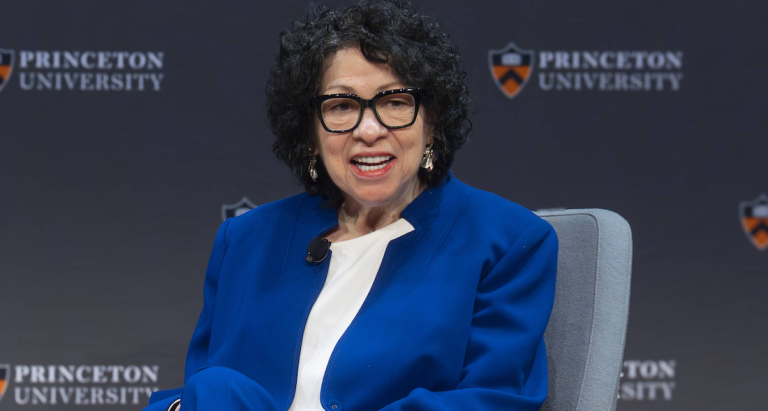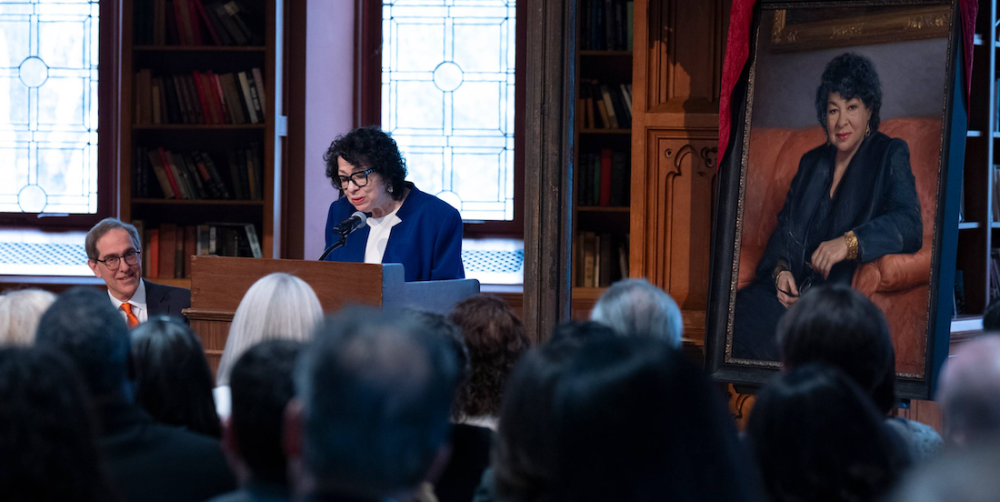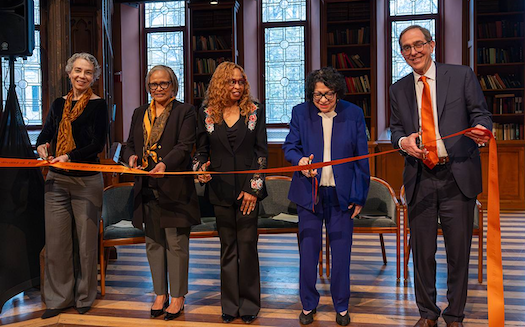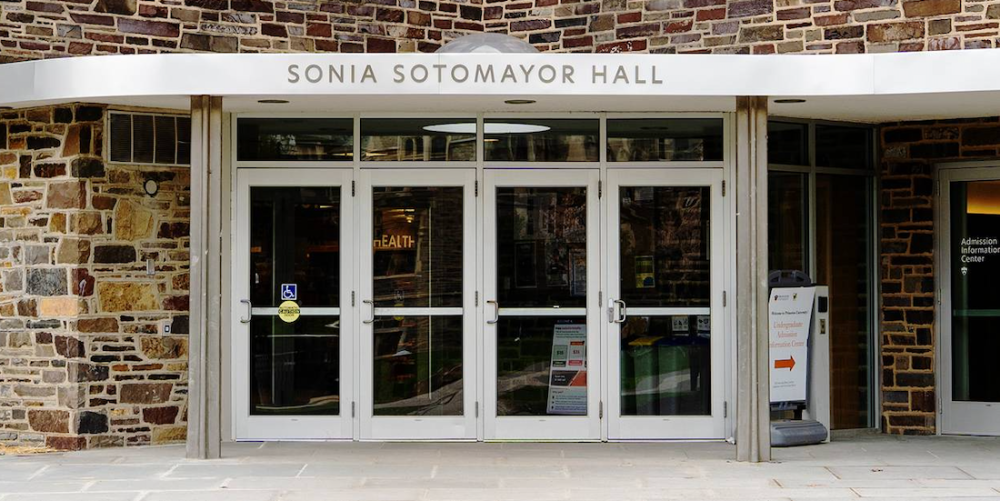
Supreme Court Justice’s Legacy Celebrated at Princeton University with Named Building and Portrait
New York, N.Y. – Princeton University has renamed a prominent campus building in honor of U.S. Supreme Court Justice Sonia Sotomayor, a member of the Class of 1976, marking a historic tribute to the first Hispanic justice and third woman to serve on the nation’s highest court.
The building, located at 36 University Place, now bears the name Sonia Sotomayor Hall, celebrating her trailblazing career and deep ties to the university. Additionally, a portrait of Justice Sotomayor has been added to Princeton’s permanent art collection, further cementing her legacy as an inspiration for future generations.
The dedication ceremony, held on April 11 in Chancellor Green, was attended by university leaders, alumni, and Sotomayor herself. “As a trailblazing student, a loyal alumnus, a University trustee, and an extraordinary jurist, Justice Sotomayor has lived Princeton’s values fully and beautifully,” said President Christopher L. Eisgruber.
“I’m delighted that her name will grace our campus and inspire generations of students now and in the future,” he added, as reported by the Princeton Alumni website.

A Building Reflecting Sotomayor’s Commitment to Opportunity

Sonia Sotomayor Hall houses the Emma Bloomberg Center for Access and Opportunity, the Center for Career Development, and the undergraduate Admission Information Center, making it a hub for programs supporting first-generation college students, lower-income students, transfer students, and veterans.
It is also one of the first places prospective students visit, serving as a gateway to the Princeton experience. The building includes one of two Princeton University Store locations, a familiar spot for students purchasing essentials.
“How incredibly fortunate we are that Justice Sonia Sotomayor’s name and image will be the welcome sign for every student who dreams of a Princeton education,” said Dean of Admission and Financial Aid Karen Richardson, Class of 1993.
The choice of 36 University Place reflects Sotomayor’s own journey as a first-generation student from the Bronx, New York, who overcame cultural and economic challenges to excel at Princeton and beyond.
Sotomayor’s Trailblazing Path at Princeton and Beyond
Born to Puerto Rican parents in the Bronx, Sonia Sotomayor arrived at Princeton in 1972, describing herself as feeling like “a visitor landing in an alien country.” Despite initial struggles with academic writing and cultural adjustment, she graduated summa cum laude in 1976, earning the Moses Taylor Pyne Honor Prize, the university’s highest undergraduate award.
As a student, she was a leader in the Latino Student Organization and served on the governing board of the Third World Center, now renamed the Carl A. Fields Center.
Her activism included advocating for more Latino faculty and Latin American studies courses, notably filing a complaint with the Department of Health, Education, and Welfare in 1974 to address discriminatory hiring and admission practices. Her efforts led to the hiring of Latino faculty and the creation of a seminar on Puerto Rican history.
After Princeton, Sotomayor earned her J.D. from Yale Law School, served as an assistant district attorney in New York, and rose through the judiciary, culminating in her 2009 appointment to the U.S. Supreme Court by President Barack Obama.
A Portrait of Inspiration and Inclusion
The unveiling of Sotomayor’s portrait, part of Princeton’s History and Sense of Place initiative, aligns with the university’s efforts to diversify its campus iconography. The portrait, painted by artist Newton, was praised by Sotomayor for bringing her “alive in such a moving way.”
Reflecting on her student years in the 1970s, when Princeton had few women and no buildings or portraits honoring them, she expressed hope that Sonia Sotomayor Hall and her portrait would inspire students to “carry forward a new sense of all that is possible.”
The Council of the Princeton University Community (CPUC) Committee on Naming and the Campus Iconography Committee selected Sotomayor for her contributions to the nation’s service and humanity, as well as her impact on Princeton’s culture. Other honorees in the initiative include Nobel laureate Toni Morrison, Bill Bradley, Class of 1965, and Alan M. Turing, a 1938 graduate alumnus.
A Legacy of Service and Humanity
Sotomayor’s influence extends beyond the judiciary. Her 2014 Alumni Day speech inspired Princeton to update its informal motto to “In the Nation’s Service and the Service of Humanity,” a phrase now etched on a stone medallion at Nassau Hall.
In 2019, alumni established the Sonia Sotomayor 1976 Scholarship Fund to support first-generation students committed to service, reflecting her ethos of “leaving no one behind.” “Service to me meant what my life has been. It’s caring, it’s giving,” Sotomayor said at the 2017 ¡Adelante Tigres! conference, as noted by the Princeton Alumni website.
Her judicial career includes landmark decisions, such as the 1995 injunction that ended a Major League Baseball strike, earning her the nickname “the judge who saved baseball.” As a Supreme Court Justice, she continues to advocate for justice and equity, drawing on her experiences as a first-generation Latina to inform her perspective.

A Lasting Symbol for Future Generations
The renaming of Sonia Sotomayor Hall and the portrait unveiling underscore Princeton’s commitment to inclusivity and recognizing trailblazers who embody its values.
“Justice Sotomayor’s inspiring story is a powerful reminder of the importance of diversity and inclusivity to the excellence of our campus community,” Eisgruber said.
For students like Eleanor Hawkins, Class of 2028, the dedication serves as a reminder of Sotomayor’s journey from the Bronx to the Supreme Court, inspiring them to pursue their own paths of impact.